The petroleum system is one of the oldest and most important systems humans have developed. The system is a network of interconnected reservoirs, wells, pipelines, and terminals that transports petroleum products. The petroleum system has been essential for powering industrial society and has multiple purposes including transportation, energy production, and agricultural production.
The petroleum system is composed of three different parts. The first part is the source of the petroleum, the second part is the processing of the petroleum, and the third part is the product. The source of petroleum can be oil fields, gas fields, or coal fields. A well is drilled into one or more of these reservoirs to extract the oil. The processing of petroleum can be done with distillation, catalytic cracking, and polymerization. The petroleum system then transports the oil to a terminal, where the oil is stored.
Elements of a petroleum system
The features of a petroleum system include the reservoir rock, source rock, trap, seal, migration path, and kitchen.
Source rock
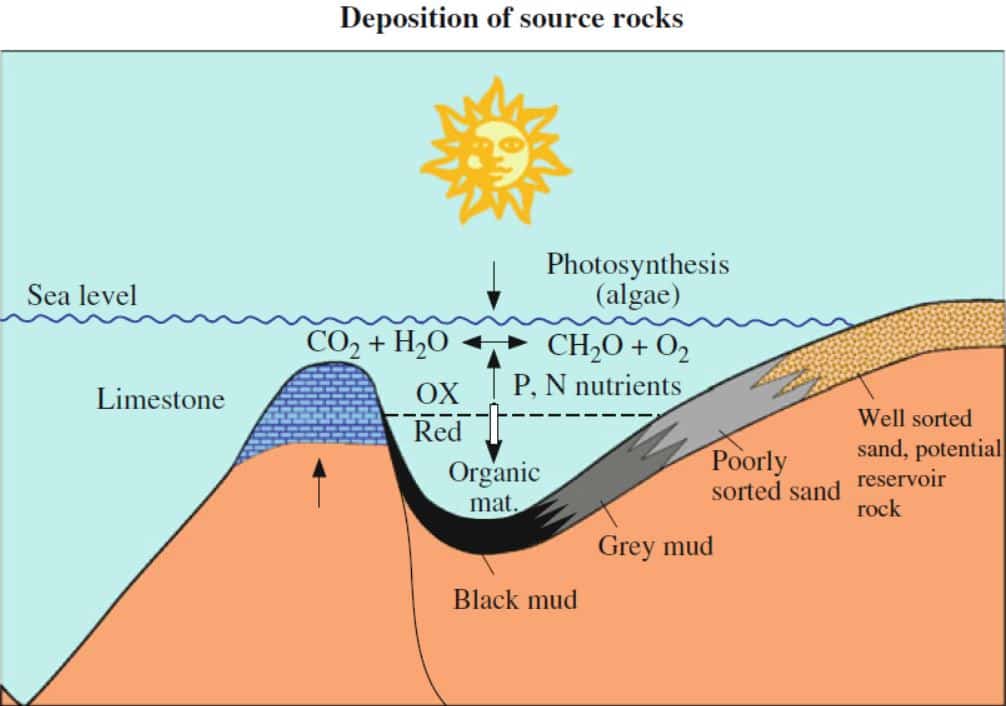
Petroleum source rocks are an important component of petroleum systems. A petroleum source rock is a rock that can produce oil and natural gas. There are many different types of source rocks, and each has a different ability to produce Oil and Gas. It is important to understand how source rocks are used in order to properly assess the impact of petroleum operations on the environment.
Source rocks are divided into three groups according to oil generation; source rocks that have already produced all hydrocarbons of the crude oil type are referred to as post-mature source rocks. Mature source rocks are those in the generating face. Immature source rocks refer to those rocks that have not yet produced hydrocarbons.
Reservoir rock
Reservoir rocks are the subsurface rocks that trap the hydrocarbon fluids (oil and gas) and form the storage reservoirs for them. The nature of the reservoir rocks controls many aspects of the petroleum system, including the amount of oil and gas that can be stored in a given volume of rock, the rate at which fluids can be produced from the reservoir, and the efficacy with which fluids can be recovered during production. Reservoir rocks consist of a wide variety of rock types, including sandstone, limestone, dolomite, and shale. The most significant factor in defining the properties of a given reservoir rock is the grain size of the rock.
Trap
Traps prevent the migration of natural gas and oil up through the reservoir, which can result in decreased production and greater expense. Traps can be classified into stratigraphic, structural, and combination traps. Stratigraphic traps are found in horizontal layers of the reservoir rock and structural traps are found in the subsurface rock layers. Combination traps exhibit both stratigraphic and structural trap features. Both types of straps can result in the accumulation of hydrocarbons in reservoir.
Stratigraphic traps are the most common type of traps and form as a result of the deposition of sedimentary rocks overlying oil-bearing sandstones. Sedimentary rocks can be divisia, shale, or carboniferous in age. Carbonate rocks also can form traps, but they are less common. Structural traps are less common and formed as a result of the interplay of stress and gravity.
Seal
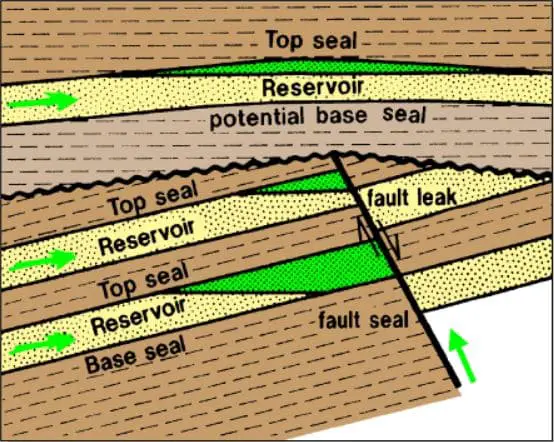
A seal is a layer of impermeable rock that lies above and around a reservoir, trapping hydrocarbon fluids in the reservoir. Seal can refer to both the rock strata that forms the barrier, and the actual barrier itself. Seals are vital elements of petroleum systems, as they prevent the escape of hydrocarbon fluids from the reservoirs.
In order for a seal to be effective, it must have low permeability and be able to withstand the pressure of the fluids it is trapping. For a trap to form, there must be a seal with low permeability above the reservoir rock and a structure (such as an anticline or a fault) that will cause the fluids to be trapped. Since they are more ductile, anhydrite-filled dolostone, shaly siltstone, and sandstone, and cemented sandstone seals are more efficient.
Migration path
The migration path is an important part of a petroleum system. The flow of hydrocarbons into the reservoir rock is known as migration. The primary migration of hydrocarbons is from their source into reservoir rocks. Expulsion is the process by which hydrocarbons in a hydrocarbon trap or other location of accumulation move further into the reservoir rocks.
Kitchen
The subsurface area known as the kitchen contains source rocks that have attained the proper pressure and temperature to produce liquid hydrocarbons instead of gas.
Petroleum system processes
Petroleum system processes are physical, chemical, and biological processes that interact to generate and trap petroleum. Petroleum systems are typically characterized by the presence of source rocks, reservoirs, seals, and overlying traps. The interaction of the processes that generate and trap petroleum in a petroleum system results in petroleum accumulation. The main processes that operate in petroleum systems are source rock maturation, oil generation, oil expulsion, and oil migration, oil entrapment by reservoirs and seals, and secondary alteration of reservoirs. The processes can be categorized into trap formation and generation-migration-accumulation.
Trap formation
In the petroleum system, there are two main groups of traps: stratigraphic traps and structural traps. Stratigraphic traps form when sedimentary rocks accumulate in a certain way.
Structural traps
Structural traps form when the earth’s crust deforms
Anticline Traps
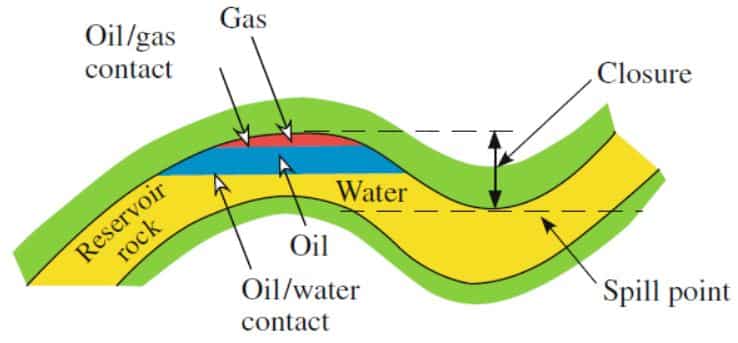
A well-known type of trap is an anticline. These traps are created when a bed of limited permeability shale-covered sandstone is squeezed into a trap filled with petroleum products. Although sediments can also be compressed, sideways pressure is the most common cause of anticline trap formation, folding the rock strata.
Fault Traps
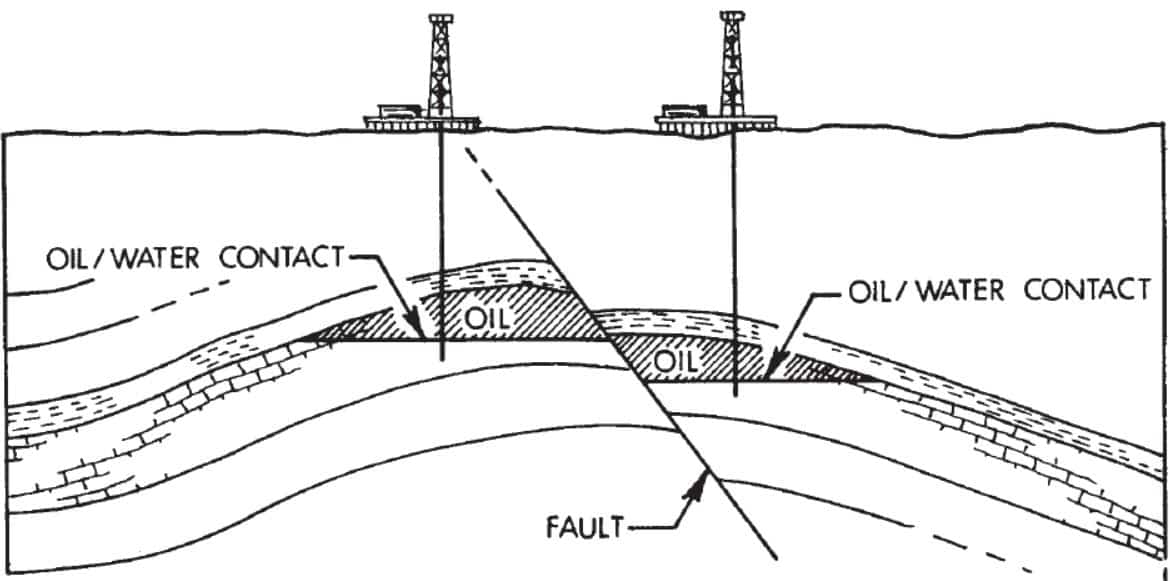
Fault trap formation in the petroleum system processes can result from a number of different mechanisms. The splitting of reservoir rock along a fault line results in one typical type of fault trap. Clay retains the oil and stops it from escaping the split reservoir’s sides. Other times, a pressure difference between the fault’s two sides prevents the fluids from moving.
Salt Domes
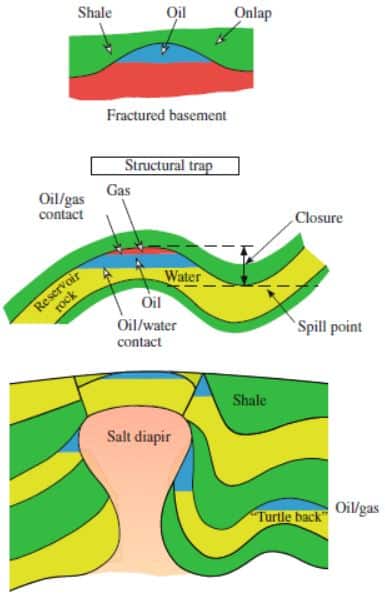
Salt that is slowly rising from underground forms salt dome traps. Rocks may be broken up and deformed as the salt moves higher. It can take hundreds of thousands of years for this salt to alter the rock; this process is known as salt tectonics.
Stratigraphic traps
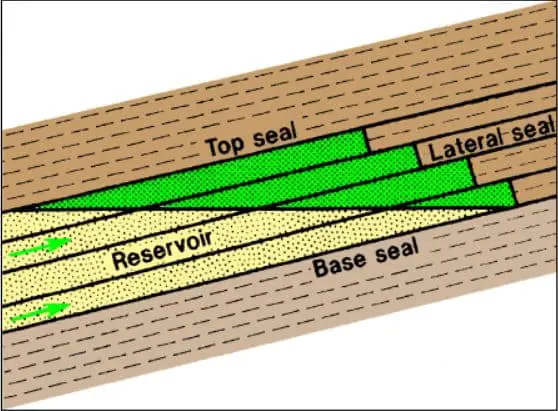
Stratigraphic trap formation in the petroleum system processes often occurs due to the deposition of sedimentary rocks. Reservoir rocks, which are composed of sedimentary rocks, can form in discontinuous layers. When this happens, seals are formed next to and on top of the reservoir, which can trap gas and oils. The trap can emerge when these seals are formed from impermeable or shale materials with low permeability.
Stratigraphic traps are categorized by the changes that develop during sedimentation. Secondary stratigraphic traps are an outcome of changes that happen after sedimentation, whereas primary stratigraphic traps are a product of changes that happen during the sedimentation process.
Generation-migration-accumulation
Generation
The petroleum generation process in the petroleum system occurs due to the high organic carbon content of productive source beds. This high organic carbon content results from the burial of plants and animals over millions of years. The higher the rock quality, the more mature it is. The generation process is divided into three stages:
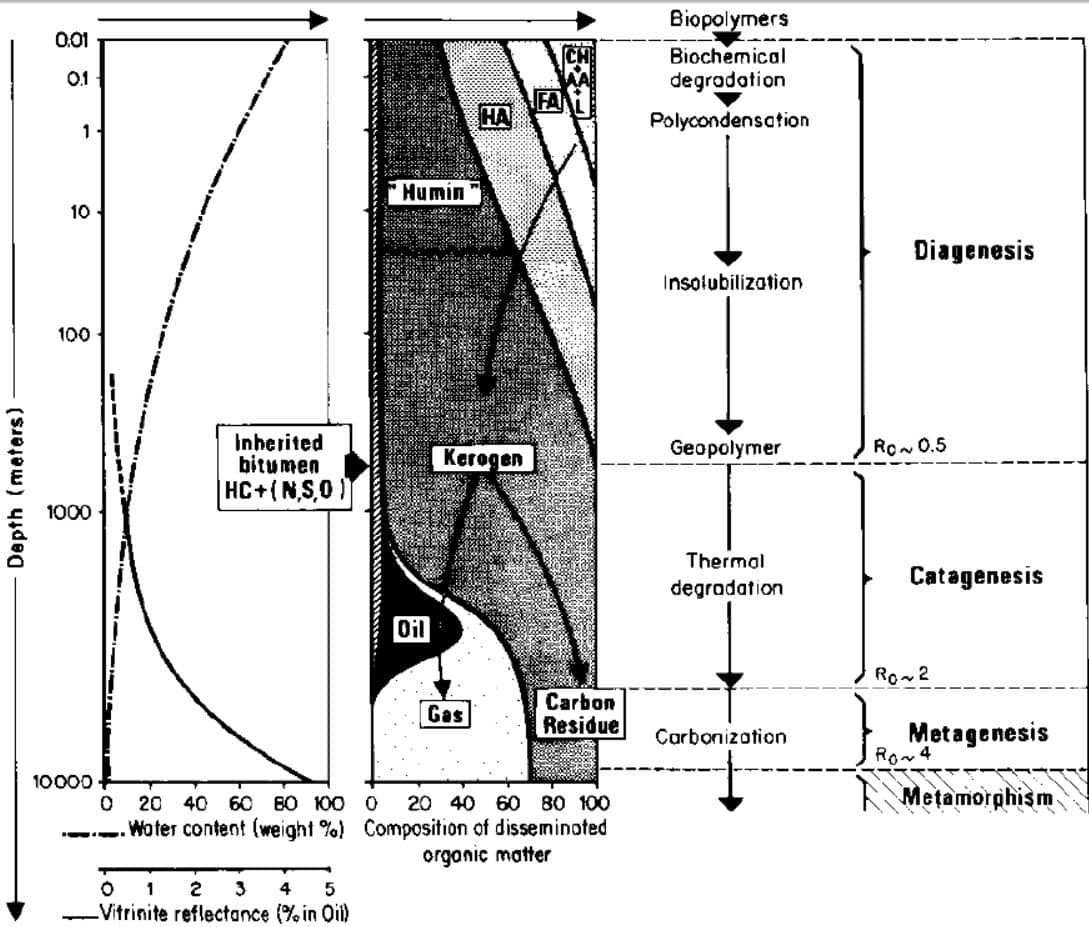
Diagenesis: Petroleum diagenesis is the first process by which organic matter is converted into petroleum. This process takes place in sedimentary basins where organic-rich rocks are buried beneath layers of rock. The main reactions that take place during petroleum diagenesis are thermal maturation, burial diagenesis, and hydrocarbon generation.
Catagenesis: The petroleum catagenesis process is a process that occurs in the earth’s crust and upper mantle. This process is responsible for separating the hydrocarbons into molecules smaller than 10 atoms in length, which can then be used to produce energy. The process is also responsible for the oxidation of these molecules, which creates molecules of hydrogen and carbon.
Metagenesis: The petroleum metagenesis process is a chemical reaction between water, oil, and gas. This reaction occurs in the earth’s crust and produces liquid and gas reservoirs.
Migration
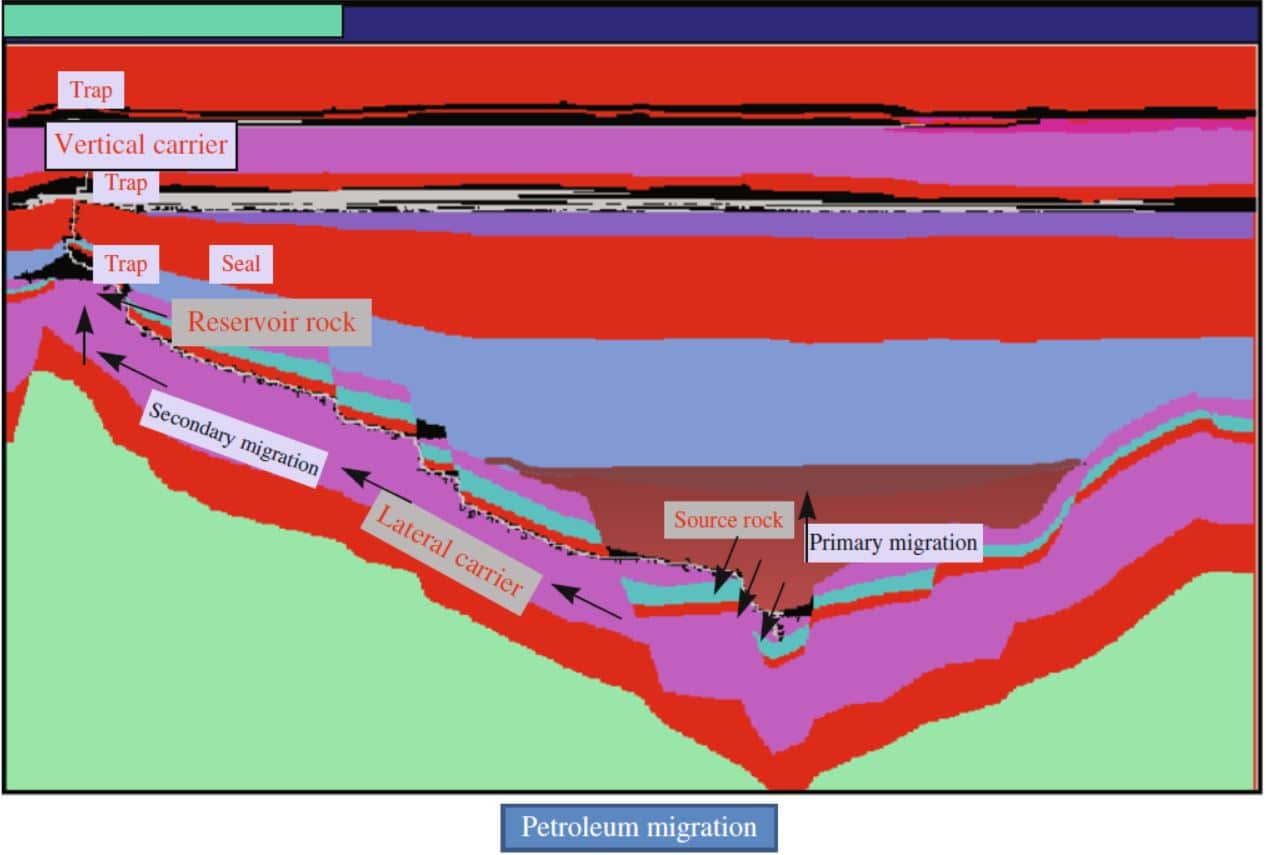
Petroleum migration occurs when oil and gas move from one reservoir to another. There are two types of petroleum migration
Primary migration: Primary migration refers to the vertical movement of oil from its source rock into an underlying trap. The actual movement of oil is thought to occur through fractures, bedding planes, and pore throats. In an ideal setting, all three of these flow paths would be connected, allowing for the free flow of oil. However, in reality, fractures, bedding planes, and pore throats are often not connected, and this can lead to a situation in which oil can become trapped in the source rock.
Secondary migration: Secondary petroleum migration is the movement of petroleum away from its original source, the source rock. Secondary migration may occur in either low permeability or tight reservoirs. Low permeability reservoirs are characterized by very low effective permeability and porosity, while tight reservoirs have high total organic carbon content. Secondary migration may also occur as a result of a tectonic activity or changes in the pressure or temperature of the original deposit.
Accumulation
Accumulation of petroleum in the petroleum system is the result of migration and entrapment of hydrocarbons. The hydrocarbons are generated in the kitchen and migrate through the traps to the surface. The nature of the trap can be either structural or stratigraphic. These traps are formed by tectonic events such as faulting, folding, and diapirism. The oil and gas are stored in the reservoir rock. The reservoir can be either a porous or a non-porous rock. The timing of the tectonic events controls the timing of the accumulation of petroleum.
Unconventional petroleum system
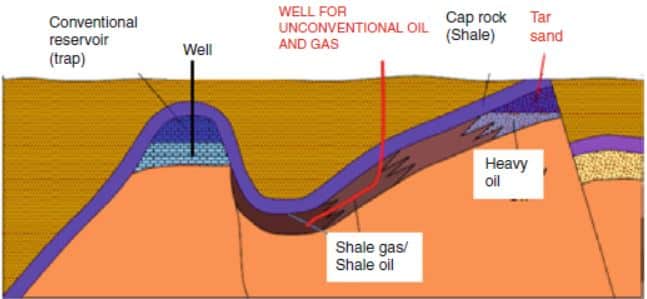
Unconventional petroleum systems are believed to be challenging to extract since some of the resources are projected to be trapped in reservoirs with lower permeability and porosity surrounding them. As a result, the movement of gas or oil into the wells becomes progressively challenging or frequently impossible. Specialized methods and instruments, which can be costly to manufacture, are routinely utilized to extract value from unconventional resources.
In the case of oil sand deposits, steam-assisted gravity drainage is utilized, which can cause the subterranean deposits to produce thick bitumen. Compared to the procedures that are typically employed for the mining of conventional oils, each of these techniques is regarded as being more expensive. However, it is clear that they enable the extraction of hydrocarbon resources from locations that were previously inaccessible or impossible to extract from.
When extracting fuels like shale oil in the unconventional system, the hydraulic fracturing procedure is utilized to make many cracks in the rock to let the oil and gas flow through them. In recent years, the exploration and production of unconventional petroleum resources have seen a resurgence. This is due in part to advances in technology and refinements to drilling and production methods.
Conventional petroleum system
Conventional resources are generally defined as oil and gas deposits that are found in traditional reservoirs, such as sandstone or limestone, and that can be extracted using standard or straightforward methods. Standard extraction methods, such as drilling, are often employed to extract fossil fuels from the conventional system.
Conventional oils are composed of hydrogen-filled molecules with carbon atoms ranging from C1 to C60, short hydrocarbon chains, and hydrogen atoms. As a result, it is clear that they have lighter molecular weights. It is clear that conventional oils generate more energy with less waste than their unconventional counterparts because they contain more hydrogen, which provides the majority of the energy, and less carbon.
Petroleum system analysis
Analysis of the petroleum system can provide valuable insight into the organization, health, and future of an economy. System components include oil wells, processing and transportation systems, and reserves. By understanding the workings of the petroleum system, business leaders can make informed decisions that support their goals.
Source rock analysis: Source rocks are the foundation of any petroleum system. In order to effectively assess the health of a petroleum system, it is imperative to comprehend the composition of the source rock. This can help identify any potential issues with the integrity of the system. Source rock analysis evaluates primarily the organic amount, organic type, and maturity of samples. Additionally, this information can be used to help determine the potential source of combustible gas.
Basin analysis: Basin analysis involves the examination of the sedimentary fill, tectonic processes, and heat flow history. The analysis reviews the tectonic and sedimentary history of the system in question followed by an evaluation of the basin fill. Next, a burial and thermal history model is created to identify the possible location of hydrocarbon generation, expulsion, and trapping.
Read this article for more about sedimentary basins.
Reservoir analysis: Petroleum system reservoir analysis is a critical tool used in petroleum exploration and production. The analysis can help to identify potential reserves, and can also help to optimize extraction techniques. To analyze petroleum system reservoirs, engineers must have a fundamental understanding of the chemical and physical properties of the reservoir. Additionally, they must have an understanding of the Drake equation and its application to petroleum reservoirs.
REFERENCES
Al-Hajeri, M. M., Al Saeed, M., Derks, J., Fuchs, T., Hantschel, T., Kauerauf, A., … & Peters, K. (2009). Basin and petroleum system modeling. Oilfield Review, 21(2), 14-29.
Baur, F., Hosford Scheirer, A., & E. Peters, K. (2018). Past, present, and future of basin and petroleum system modeling. AAPG Bulletin, 102(4), 549-561.
Bryant, I., Levy, T., Neumaier, M., & Tessen, N. (2012, February). A Novel Approach to Incorporate Full Petroleum System Analysis into Play Risk Assessments. In EAGE Workshop on Petroleum Play Assessment (pp. cp-277). European Association of Geoscientists & Engineers.
Henriksen, E., Ryseth, A. E., Larssen, G. B., Heide, T., Rønning, K., Sollid, K., & Stoupakova, A. V. (2011). Tectonostratigraphy of the greater Barents Sea: implications for petroleum systems. Geological Society, London, Memoirs, 35(1), 163-195.
Jia, C. (2017). Breakthrough and significance of unconventional oil and gas to classical petroleum geological theory. Petroleum Exploration and Development, 44(1), 1-11.
Katz, B., Gao, L., Little, J., & Zhao, Y. R. (2021). Geology still matters–Unconventional petroleum system disappointments and failures. Unconventional Resources, 1, 18-38.
Magoon, L. B., & Dow, W. G. (1991). The petroleum system-from source to trap. AAPG Bulletin (American Association of Petroleum Geologists);(United States), 75(CONF-910403-).
Max, M. D., & Johnson, A. H. (2014). Hydrate petroleum system approach to natural gas hydrate exploration. Petroleum Geoscience, 20(2), 187-199.
Peters, K. E., Curry, D. J., & Kacewicz, M. (2012). An overview of basin and petroleum system modeling: Definitions and concepts.
Peters, K. E., Schenk, O., Hosford Scheirer, A., Wygrala, B., & Hantschel, T. (2017). Basin and petroleum system modeling. In Springer handbook of petroleum technology (pp. 381-417). Springer, Cham.
Williams, K. E. (2013, May). Source rock reservoirs are a unique petroleum system. In AAPG Annual Convention and Exhibition, Pittsburgh, Pennsylvania.
Xiao, X. M., Zhao, B. Q., Thu, Z. L., Song, Z. G., & Wilkins, R. W. T. (2005). Upper paleozoic petroleum system, Ordos basin, China. Marine and Petroleum Geology, 22(8), 945-963.
Zhao, J. Z., Li, J., Wu, W. T., Cao, Q., Bai, Y. B., & Er, C. (2019). The petroleum system: a new classification scheme based on reservoir qualities. Petroleum Science, 16(2), 229-251.
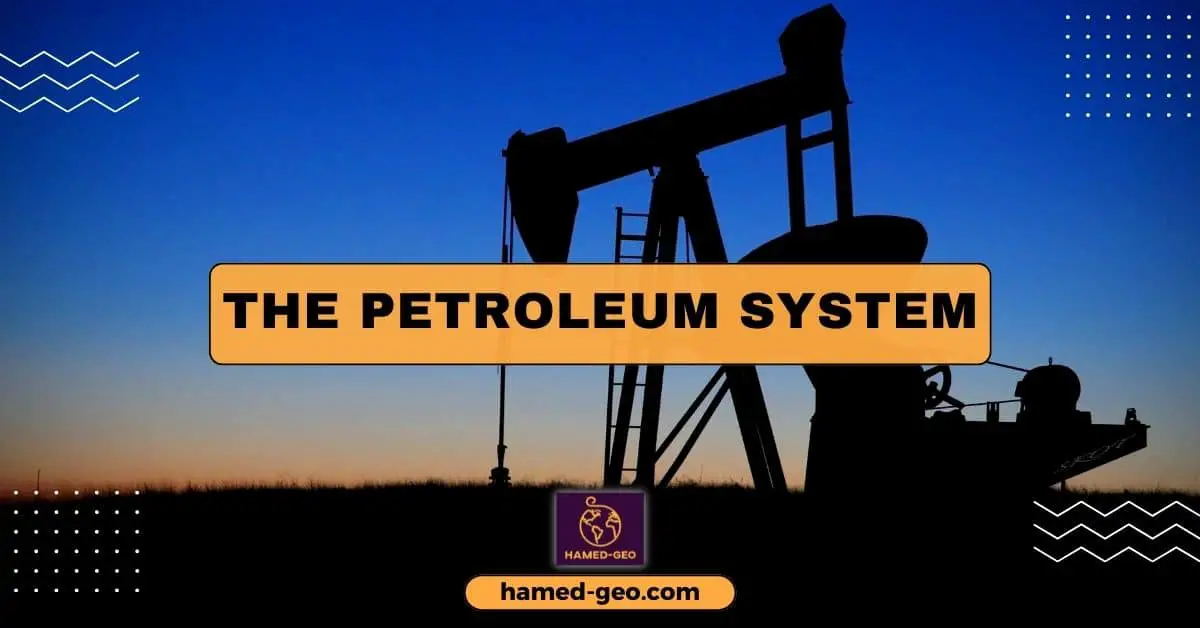
[…] for precious minerals such as petroleum and limestone. For instance, sandstone is a well-known petroleum clastic reservoir rock with excellent porosity and permeability that provides a conducive environment for the exploitation […]